Supply and Demand Relation: Definition, Types, and Examples

Supply and demand relation is a theory that explains the market’s relationship between supply and demand. The supply and demand relationship is important in an economy as it is the backbone of several factors, including the price of commodities and services.
Supply refers to the amount of a commodity or service that is available at any given price. In contrast, demand refers to the amount that consumers are willing and able to pay for that good or service.
The supply and demand law is an important theory that explores the relationship between supply and demand. The law states that a commodity or service’s price increases when demand increases and/or a limited supply. The price of a commodity or service decreases when there is a decrease in demand and/or higher supply.
Supply and demand are price-sensitive, and the supply and demand curves illustrate this relationship. Economics’ primary model of price determination is the supply and demand curve. Supply and demand in a market negotiate the price of a commodity. The resulting price, known as the equilibrium price, is the point at which the good’s producers and customers reach a mutually agreeable price. In a state of equilibrium, the production of a good is identical to consumption. The cost has an impact on consumption.
Price is determined by demand. As a result, using consumption as a stand-in for demand is incorrect because the relationship between supply and demand controls demand. The law of demand operates similarly in the stock market. There are five main types of supply – market supply, joint supply, composite supply, short-term supply, and long-term supply.
There are five main types of demand – price demand, composite demand, competitive demand, joint demand, income demand, short-run and long-run demand, and demand from direct and derived sources.
What is the Supply and Demand Relation?
The supply and demand relationship refers to the interaction between the supply of a product and the demand for that product in a market. Supply is the amount of a product that producers are willing and able to provide to the market at a given price, while demand is the amount of a product that consumers are willing and able to purchase at a given price. The prices and quantities supplied and demanded to determine market equilibrium.
Supply and demand have a direct relationship in the economy. The two factors – supply and demand- work together primarily to determine the price of a product. The consensus is that when a higher demand and a supply cannot match the demand, the price tends to rise. Conversely, the price tends to drop when there is lower demand and a supply that is more than the demand.
How does Supply and Demand Relation work?
Supply and demand work depending on each other. Supply and demand work together for price determination in the market. The supply and demand relationship is proportional. Supply has to be increased according to high demand to ensure price equilibrium. The price at which demands from suppliers and consumers are met is known as the equilibrium price.
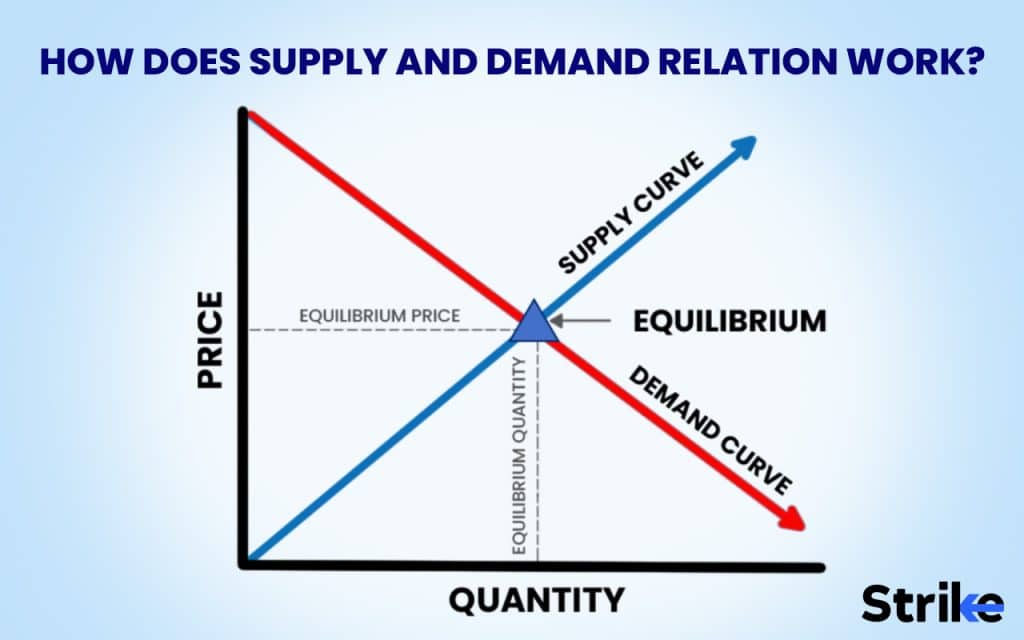
According to the theory of supply and demand, the market equilibrium is the market price at which the number of commodities provided and demanded in a market is equal. Elasticity is the term used to describe the link involving changes in price and the supply and demand for a service or product. While elastic commodities are highly responsive to price changes, inelastic goods are somewhat insensitive to price fluctuations.
The supply and demand curve are one of the most fundamental concepts in economics. The supply curve shows how pricing affects producer supply. It indicates how much producers will sell at different pricing. The supply curve slopes right, showing that as price rises, supply rises. Producers will supply more at higher pricing to make more profit.
The demand curve shows how pricing affects consumer demand. It displays how much buyers will buy at various costs. As price rises, quantity required falls, as shown by the demand curve. High prices reduce customer demand. A pictorial representation of the same is given below.

Let us understand the supply and demand relationship through the situation of a banana salesperson. Let us assume there are ten bananas in the market and a demand for 15. The demand is higher than the supply here. The seller can sell it at a higher price if the demand is higher than the supply, and only those who can afford the higher price will buy the bananas.
At the same time, the price will drop if there are 20 bananas and the demand for bananas is only 15. The seller will then try to reduce the price in an effort to sell more.
Demand is how much people are willing to pay for something, and supply is how much people are willing to sell. Prices of goods and services are set by how much of them are on the market and how much people want them. The price will go up when there aren’t many of something, and a lot of people want it, and when there is a lot of supply and not much demand. The equilibrium price is the price where the amount of goods bought by consumers equals the number of goods sold by producers.
Why is Supply and Demand Relation important?
The supply and demand relationship is important as it helps determine market prices. Supply and demand describe how the availability of products and services and customer demand for those items affect the price.
The rate of the good rises as supply declines. On the other hand, the price decreases when the supply of the product increases. The link between price and demand is similar. The price of the commodity rises along with the growth in demand. The price of the good declines along with the decline in demand.
It’s common to predict that a product’s price will increase when demand for the product or service unexpectedly grows.
What is the law of Supply?
The law of supply states that, given other factors remaining constant, a rise in the cost of commodities will directly translate into an increase in their supply. With a drop in pricing, the rule still applies.
The producer’s actions when a good’s price increases or decreases are shown by the law of supply. The inclination is to expand supply when prices rise since there is now more opportunity for profit. Conversely, as prices drop, producers often cut back on their output because there are fewer opportunities to make money.

The law of supply is numerically represented using the equation QxS = QxS = Φ (Px), where QxS is the Quantity supplied of commodity/good x by the producers. Φ is the Function of, and Px is the Price of commodity x.
Price and quantity have a fundamental relationship that only holds true if all other variables remain constant. Other things can influence how much of a given is supplied.
How does the Law of Supply affect Stock Market Prices?
The law of supply affects the stock market prices by being a critical factor in price determination. The underlying forces of supply and demand are all in full effect on the stock market, which functions as a double-auction market. A buyer and a seller negotiate the price of a certain stock online. The trade is completed if a price can be reached.
How much an individual is prepared to pay for a stock is the primary factor affecting its market value. In the stock market, the idea of supply and demand is applicable. The retail price of the item tends to decline if there are more goods than there are customers.
The retail price of a product will often increase when there are more customers than there are available products to satisfy their demands. There are many factors that affect supply and demand, even though it is the primary component that defines a stock’s market price.
How to Analyze Stock Market with Supply and Demand Relation?
The supply and demand relation can be directly used to analyze the stock market. The supply and demand law has an effect on the stock market because it sets the prices of the stocks that make up the market. The price of a share will increase when there is a higher demand and lesser supply. A higher demand situation happens when more investors try to buy, and fewer investors try to sell shares.
Inversely, The price of a share drops when there is lower demand and high supply. A lower demand and high supply situation happens when more investors try to sell shares and buy.
What are the types of Supply?
There are five main types of supply including market supply, joint supply, composite supply, short-term supply and long-term supply. Below are each type of supply explained in detail.
1. Market Supply
Market supply alludes to the vendors’ regular availability to provide the goods. Regular delivery of foods like fish, wheat, milk, vegetables, fruits, etc., are all examples of market supply. Supply is not based on consumer demand but on the goods’ availability when market supply is considered.
One of the best examples of market supply is a daily supply of milk. The availability of milk determines the regular supply. The demand might go high if the supply is disrupted.
Market supply is important because it determines pricing and volumes of most market goods and services. In a perfect system, market supply and demand eventually balance out.
2. Joint Supply
Joint supply refers to a product or process that can produce two or more outputs. The cattle farming industry is a common example of joint supply. For example, cattle can be used for milk, meat, and other milk products. Here, the supply of all similar products will increase if there is more supply of cows. Another similar example of joint supply is the production and supply of petroleum. Byproducts of oil refining, such as butane, will be produced more If you increase the supply of petrol.
The example of milk is a good example of joint supply as well. Joint supply describes a scenario in which the creation and distribution of one good triggers the creation and distribution of an additional good. Many times, products are by-products of other products. Whey protein is a byproduct of the production of milk and is sometimes added to protein powders.
Joint supply is important because the availability of products is closely related to joint supply. The supply of all the source product’s byproducts is impacted when the source product’s demand varies. A rise in the supply of lamb or calf will result from rising demand for wool, which will likely result in lower prices.
3. Composite Supply
The supply of good comes from many different places in composite supply. Supply is made up of multiple resources in composite supply. The different products in composite supply could be raw materials that make up up the final product.
An example of composite supply can be a company selling a car with registration, insurance, tool kit, first-aid kit, and free maintenance services. This is a combined supply since insurance, registration, and free maintenance can’t be given without the car.
Understanding composite supply is important because it directly impacts the GST you pay. A composite supply, as defined by the GST, is one that is made to a receiver that is made up of two or more taxable supplies of goods, services, both, or any combination thereof that are ordinarily combined and provided together.
4. Short-term Supply
The demand can’t be met with what the buyer wants In short-term supply. Instead, the demand is met with the goods that are on hand. Time is a big constraint when it comes to short-term supply, as there may not be enough time to cope with the short-term demand hike. For instance, there was an increased demand for sanitisers and masks during the early onset of the covid-19 virus, with the supply unable to meet the sudden hike in demand.
5. Long-term Supply
In long-term supply, if the demand changes, the supply can also change because there is enough time to make more goods and put them on the market to meet the demand. For example, as the covid-19 pandemic turned out to be a long-term event, the manufacturers were able to ramp up the supply to meet the demand in the long term.
Understanding the different types of supply is important to clearly understand the supply and demand relationship. Knowledge about the latter helps make better investment and monetary decisions.
What is the law of Demand?
The law of demand says that the quantity bought changes in the opposite direction of the price. In other words, a lesser quantity is wanted as the price increases. This happens because the marginal utility keeps going down.
For example, people will try and buy a lesser quantity of milk and adjust accordingly when the price increases.
The idea of demand is among the most crucial economic analytical building blocks. Economists typically don’t only refer to a single quantity demanded but also a demand curve that shows how much of an item or service is demanded at various prices over time.
The rule of demand is the most well-known and well-accepted economic principle. The foundation of practically everything of economics is this law. According to the law of demand, when a good’s price increases, the amount demanded decreases, and when a good’s price decreases, the amount demanded increases.
Econometric studies that demonstrate that, all other factors being equal, when the cost of an item rises, the quantity of it desired declines provide some of the contemporary evidence for the law of demand.
This relationship between price and quantity demanded can be represented mathematically using the demand function Qd = f(P, I, T, E, Pr, Pe)

Where:
Qd = quantity demanded
P = price of the good or service
I = consumer’s income
T = consumer’s tastes or preferences
E = expectations about future prices or quantities
Pr = prices of related goods (substitutes or complements)
Pe = external factors, such as government policies, taxes, or regulations
What are the types of Demand?
There are six main types of demand: Price Demand, Composite Demand, Competitive Demand, Joint Demand, Income Demand, and Short-run and long-run demand. Every element has a different effect on demand. Understanding demand types and determinants is necessary. Let us explore each type of demand in detail.
1. Price Demand
Price demand is how much a person is willing to pay for a product at a certain price. Companies use price demand data to determine what price point a new product should go on the market. People will buy things based on how much they think they are worth. Price elasticity is a measure of how demand will change when prices go up or down.
An example of price demand would be increasing price of electronics. People may be willing to spend Rs.50,000 for a new phone but when the price is hiked, let us assume to Rs.75,000, a part of this people will find a resistance.
2. Composite Demand
A composite demand is defined as when a single product can be used to make more than one product. Composite demand means that the supply of the other product declines. when the demand for one product rises.Demand for a product with a variety of uses is also present in the composite example. People might want oil, for instance, since it has the ability to make plastic or gasoline.
An example of composite demand is wheat. Wheat can be used to feed animals, make ethanol, and be eaten. The supply of all the items involved will be affected negatively if the demand for a single product is affected. The prices of all the related items go up when one item is met with a shortage of supply.
Composite demand is important as it can create a rationing effect. The cost of wheat for making bread will increase if there is an increase in demand for biofuel. The amount of wheat that can be used to make bread is limited as more people desire it for biofuels. More housing is created, less land is available for farming, and the cost of agricultural land tends to increase.
3. Competitive Demand
Competitive demand happens when a customer has more than one service or product to choose from. From a business’s point of view, they can use how their competitors’ prices change to figure out how their own will sell in competitive demand.
One example of this is the difference between generic and branded medicine. The price of branded items could go down if the generic brand is available in plenty and is available at a low cost.
Buying one product results in less desire for an alternative when there is competition for consumers’ money. For instance, the demand for the competing brand would decline. if one brand of printer paper becomes more popular These products are also known as substitutes.
The cross elasticity of demand between alternative goods that are in competitive demand is crucial in assessing the impact of changes. Positive cross elasticity of demand among substitutes means that when the price of one brand of printing paper drops, demand for that brand also declines as consumers change to the cheaper option.
4. Joint Demand
Joint demand is the demand for products and services that complement each other. Products under joint demand can be things that go with other things or that people usually buy together. For instance, bread and butter. There is a connection between the two products, but the demand for one doesn’t have to depend on the demand for the other.
Fish and chips, steel and iron ore, and smartphone apps are a few examples of items that are in high demand together.
The goods complement one another and there is a large cross-elasticity of demand when there is joint demand. An increase in demand for motor insurance follows a decrease in the price of motor vehicles because the cross elasticity of demand between complementing items is negative.
5. Income Demand
Income demand refers to an increase in demand when people’s income or spending power goes up. People want to buy more when they make more money. People’s tastes and expectations also change when their income goes up, People will often buy a product or service because they can afford it, even if they think it isn’t as good. As people’s incomes rise, they will buy less of these lower-quality goods.
Income demand is important because it indicates how much of a commodity a consumer will purchase at various income levels, income demand is the operational demand for a good or service.
6. Short-run and long-run demand
Short-run demand relates to how consumers react to price changes when the factors remain constant. For example, Companies are forced to absorb the lost revenues if demand for a product falls dramatically, and a manufacturer has large overhead expenses. Companies have the opportunity to respond to the new circumstances over time, or in the long run, by reducing labour or increasing pricing and supply.
7. Demand from direct and derived sources
The demand for a final product is referred to as direct demand. Food, clothing, and cell phones are examples. It is also known as autonomous demand because it is unrelated to the demand for other products.
Derived demand is demand for a product resulting from the use of others. The demand for pencils, for example, will increase the demand for wood, graphite, paint, and eraser materials. In this case, the demand for wood is determined by the need for its applications.
Derived demand is akin to joint demand because of its relationship to other products, d. It differs from joint demand because the final product is required to generate a need. There is no demand for the intermediate product if those end items are not required.
What is the role of Supply and Demand Relations in our economy?
The link between supply and demand is significant in the economy because it determines the pricing and quantities of most goods and services accessible in a particular market. The market economy theory says that the relationship between supply and demand will be in balance at some point in the future, and the point is called the equilibrium price.
How does Supply and Demand Relation affect our life?
Supply and demand relation affect our life by affecting the price of goods and services we buy. The law of supply and demand is a combination of two basic economic concepts that explain how the supply and demand of a resource, commodity, or product respond to variations in price. Supply goes higher, and demand goes down as the price goes up. As prices fall, however, supply shrinks while demand expands.
An example for supply and demand affecting our life is how prices were affected during the pandemic. Reports indicated that demand for necessary commodities increased dramatically in the days before the shutdown. Among the products with a lower supply than demand were toilet paper, pasta, flour, and milk. Consumers wanted to be ready for anything because they didn’t know when the lockdown limitations would be lifted. When a result, as the supply shrank, the demand grew, enabling firms to earn more.
Due to a change in income, such as redundancy, a temporary pay cut, or unemployment, many customers felt that non-essential things were now out of reach or valued highly as a luxury. In light of this and the uncertainty surrounding the duration of the outbreak, the underlying logic changed, resulting in a decline in both supply and demand. Many of these companies were unable to turn a profit, and a considerable number went into administration or were forced to close permanently as a result.
Another example of supply and demand affecting our real life can be as simple as the price of a smartphone. Let us take the example of the iPhone for this. A brand-new iPhone that accomplishes more than the prior iPhone has been released by the mobile phone manufacturer.
For this new iPhone, the manufacturer purchases advertising in publications, billboards, and TV.
Consumers believe they absolutely must have this iPhone and will pay top cash for it. The maker accepts orders because they are aware that they have increased demand beyond his capacity to meet it. Because so many people desire their iPhones, they are now in a great position to raise the price.
How to Use Supply and Demand Balance in Economics?
According to the law of supply and demand, the connection between supply and demand determines pricing. Prices will decrease if there is a surplus of an item or service compared to its demand. Prices will increase if demand outpaces supply.
The rules of supply and demand are the foundations for the law of supply and demand in economics. According to the law of supply, businesses expand their supply of goods and services when prices increase because they may make more money. According to the law of demand, consumers make fewer purchases as prices rise.
A free market should, in theory, strive towards an equilibrium price and quantity where supply and demand converge. At that time, the supply and demand are perfectly balanced; suppliers create just the right amount of a product or service at the appropriate cost to meet everyone’s needs.
Accurate supply and demand forecasting are critical to a company’s success in a competitive market. Every business that introduces a new product must decide how much to produce and how much it will charge. A company that produces a product in excess or sets prices that are too high for the market is likely to end up with dead stock—items that no one wants to buy.
Conversely, reducing earnings by understocking or lowering prices can result in losing clients who cannot wait for backorders to be serviced. Businesses can use demand forecasting to identify the ideal supply level and the equilibrium price or the point at which supply and demand are just balanced.
Macro economics is the study of large-scale economic factors, such as GDP, inflation, unemployment, and fiscal and monetary policies. It examines how these variables impact the overall economy and shape economic trends and policies.
What are the Books that Explain Supply and Demand Balance?
The books on supply and demand help investors understand the nuances of the same and use it to better their stock market knowledge. Below listed are five books on supply and demand that can be useful reads.
- Supply And Demand by Hubert Henderson
This book is meant to give the average reader and the student who doesn’t know much about economics an idea of how economists think about economic problems now. The writers don’t want to add anything new to what we know or even try to give a complete summary of all the main ideas on the subject.
- Lemons And Lemonade by Nancy Loewen
The book is written by fiction writer Nancy Loewen and explains economics in the simplest form, including the theory of supply and demand.
- How Markets Work by Robert Prasch
How Markets Work is a new and interesting way to learn about basic economics.
This book is meant to be an important supplement for first-year economics students, especially those in non-orthodox programs, as well as for people in liberal arts and sociology who want an easy-to-understand introduction to basic economic theory.
- The Power Of Supply And Demand by Wai-Chung Lawrence Lai
Unlike many economics texts, which are generally abstract and mathematical, this book employs plain language and diagrams to demonstrate basic economic concepts. Lawrence W. C. Lai, who holds degrees in economics, law, town planning, and surveying, is a professor at the University of Hong Kong’s Department of Real Estate and Construction.
- Law Of Supply And Demand by Introbooks
The book describes the law of supply and demand, which is a critical idea and component of the global economy. Supply and demand is a notion that every country and location follows to create good progress in producing products and services and fulfilling numerous customer expectations. It is an important feature that demonstrates the interaction between various resources and their demands.
How to Use Supply and Demand in Economics for Stock Price Analysis?
The stock market can be analyzed according to the supply and demand relationship. The prices of the stocks that make up the market are set by the law of supply and demand. The price of a share will rise when there is a greater demand than there is supply. A higher demand situation results when more investors try to buy and fewer investors try to sell a share.
Conversely, share prices fall when demand is weak, and supply is strong. There is a situation of low demand and high supply when more investors attempt to buy and sell at the same time.
Stock market prices are influenced by factors called Stock Market Prices factors such as economic indicators, company earnings, market sentiment, interest rates, geopolitical events, industry-specific factors, investor behavior, and corporate news.
How to Use Supply and Demand in Economics for Technical Analysis?
Supply and demand laws can be used as indicators in technical analysis. Zones of supply and demand can frequently be used to detect institutional buying and selling. The major market players must gradually increase their position over time; they cannot just enter one deal at a time. And frequently, because of how big their positions are, they will attract all attention, which causes huge, abrupt movements on our charts.
Because the major players leave hints on our charts, we can frequently locate those places using the understanding of supply and demand zones.
Supply and demand zones are what really move the markets, despite the fact that support and resistance levels are much more well-known. Support and resistance zones are frequently created by areas of supply or demand.
The trader who is proficient at spotting supply and demand zones will be aware of potentially high-impact pricing locations much before the typical retail dealer does.


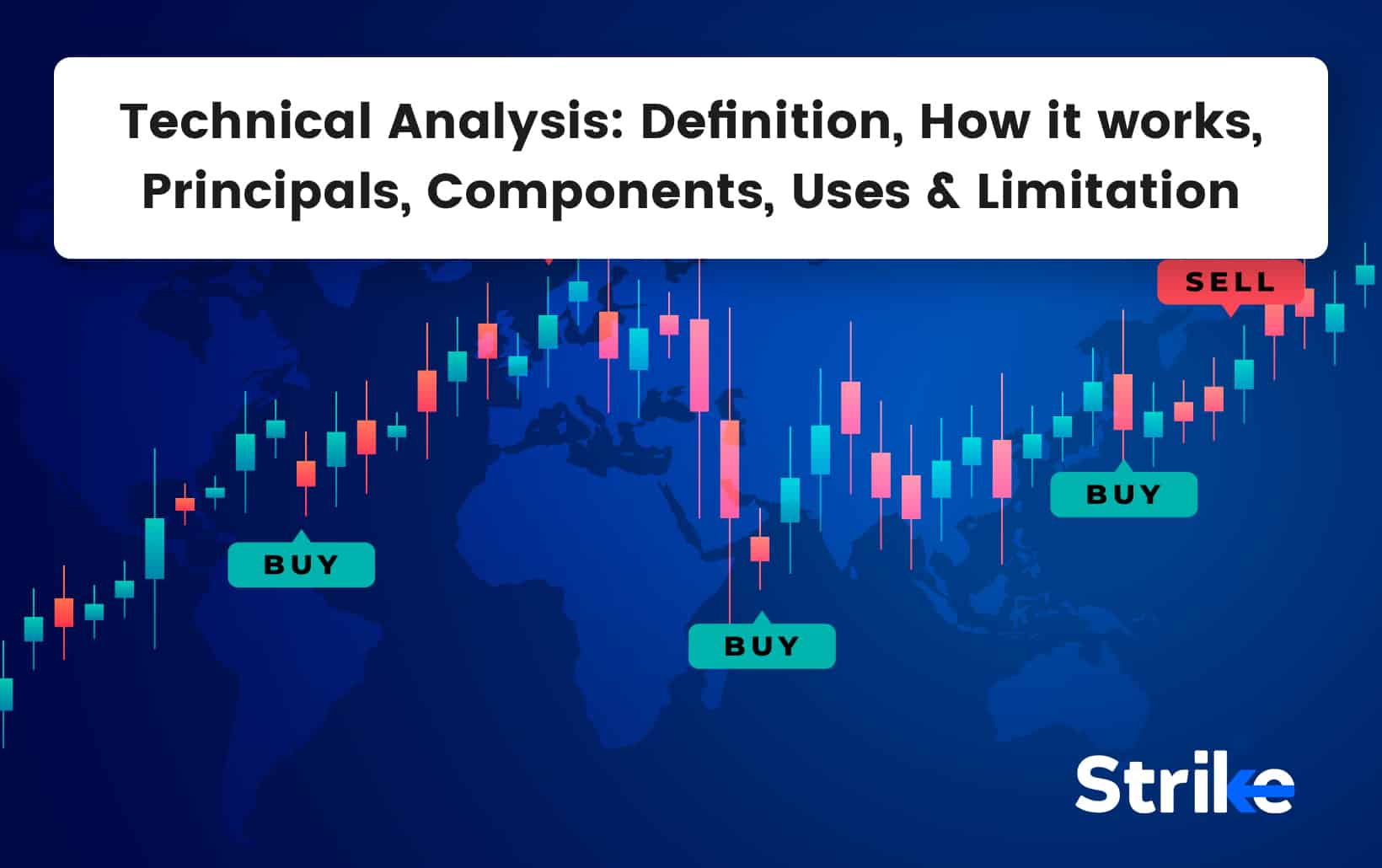
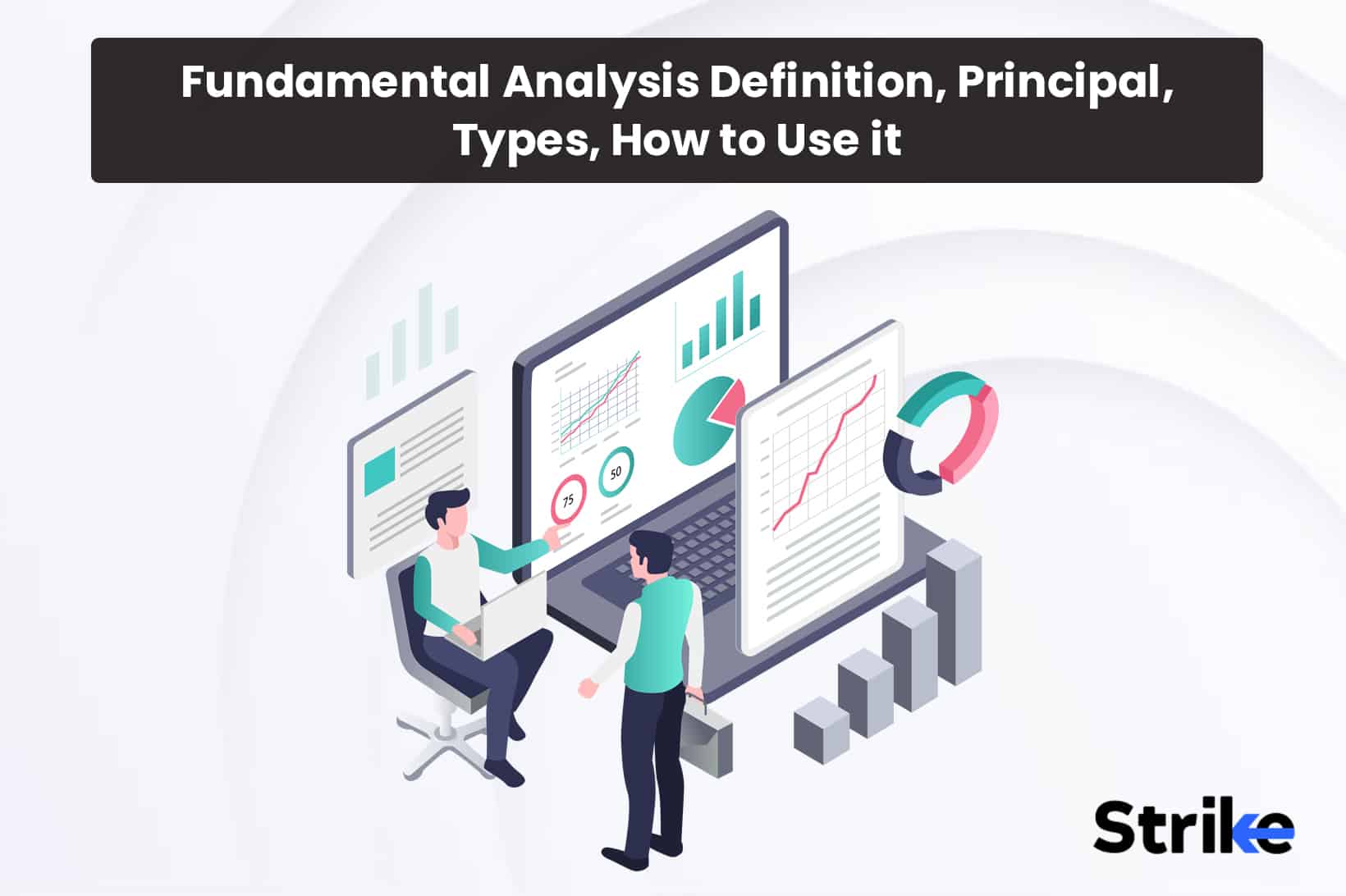


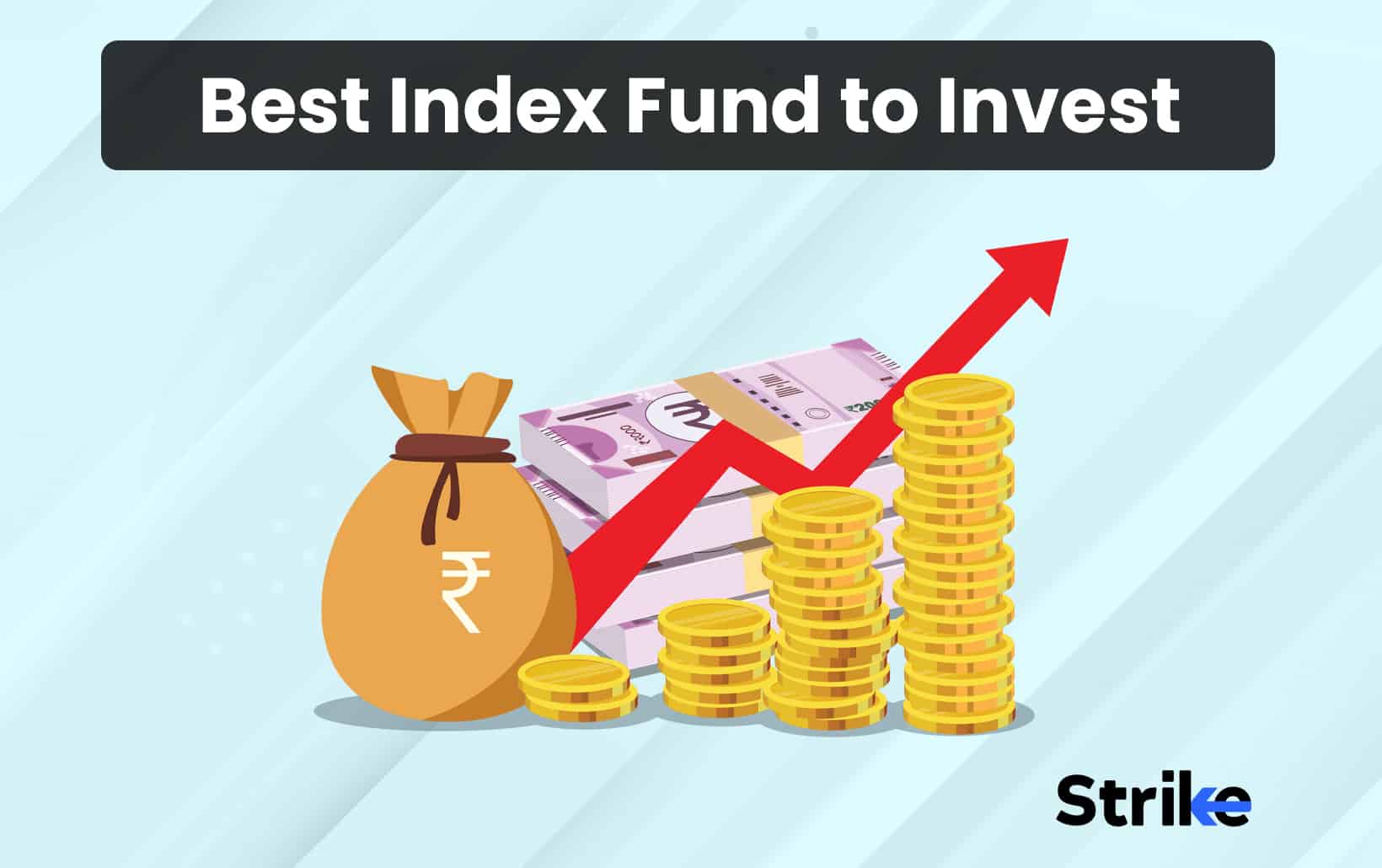



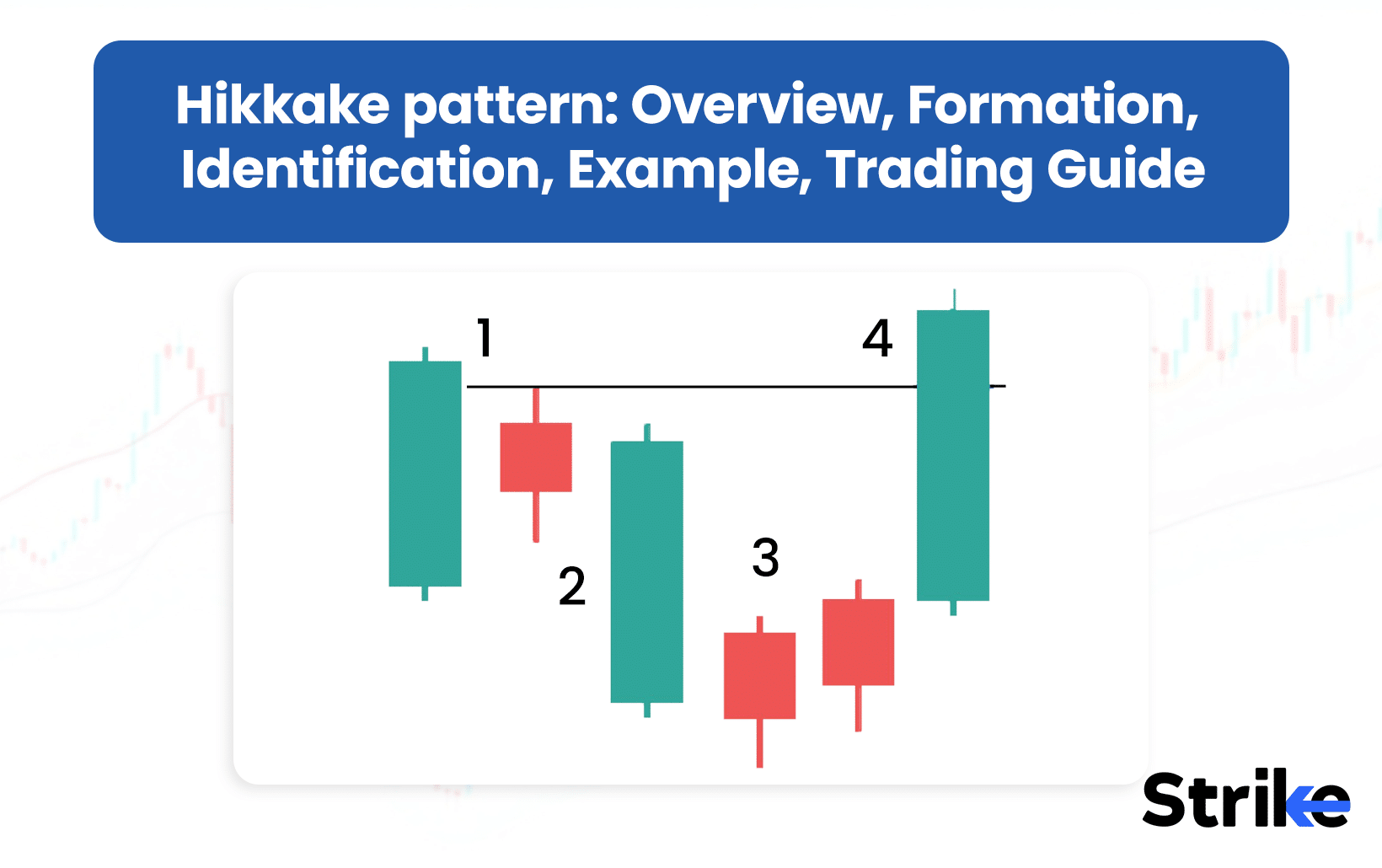
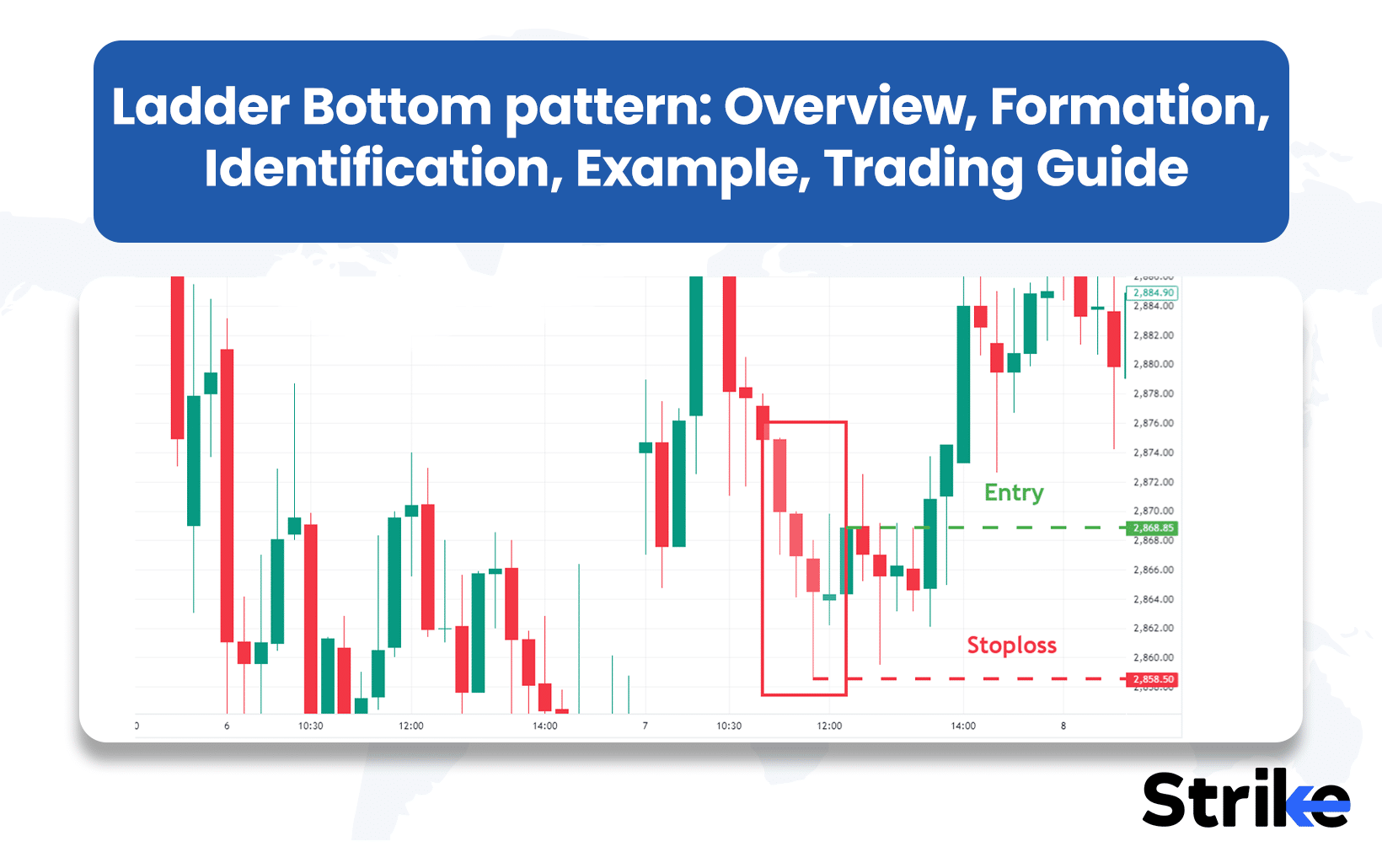




No Comments Yet.